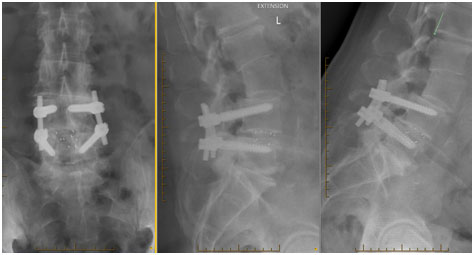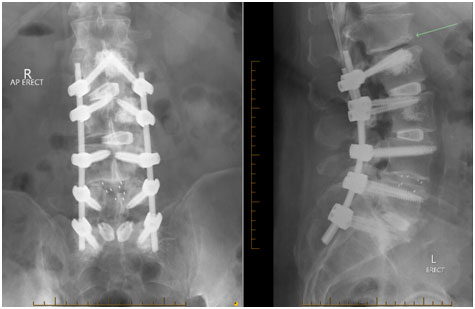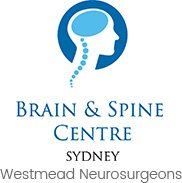Revision Spine Surgery
A number of things can happen after surgery, either in the same area that has been operated on before, or a different area. These include a new disc herniation, worsening stenosis, instability (i.e. abnormal movement of one bone on another), deformity (such as ‘curved’ or ‘bent’ spine), as well as problems with the fusion. Sometimes more surgery (also known as revision surgery) might help.
Indications
Sometimes, but not always, more surgery can help. Some of the indications for revision surgery include new disc herniation, worsening stenosis, instability (i.e. abnormal movement of one bone on another), deformity (such as scoliosis or kyphosis), or problems with the fusion (i.e. the bone did not heal properly); all of these are ‘structural’ problems that can usually be detected on scans such as X-rays, CT or MRI. The reasons for surgery might include severe or worsening leg or back pain despite physical therapy, medications and injections, symptoms of neurological compromise, including weakness, numbness and tingling, or inability to stand up straight.
Procedure
The type of procedure performed depends on the problem at hand. In general, going through the same incision and scar tissue may be associated with more wound healing problems and higher risk of spinal fluid leak; it may, however, be necessary sometimes to do so. Other approaches, including coming through the front or the side of the spine, means that your old incision and the underlying scar tissue might be avoided altogether; these approaches are not, however, appropriate for everyone. Sometimes, minimally invasive techniques can be used.
If you have had a previous fusion and the problem is in a new area, such as above or below your previous fusion, this fusion might need to be ‘extended’ to cover these other levels. If the issue is with the existing fusion, the old screws and rods may need to be removed and replaced. Sometimes supplementing the new screws with cement may be necessary to ensure they ‘hold’, especially if your bone is weak (or osteoporotic). Alternative sources of bone graft and other materials may be added to maximise your chance of fusing.
Postoperative instructions
Every patient’s recovery is different. Most patients after revision spine surgery, particularly if additional levels of fusion are required, stay in hospital for several days. Your surgeon will ensure that you have everything you need before you go home, including extra pain medications and a brace if necessary. Some patients might benefit from a short stint at rehabilitation before returning home. Walking can usually resume right away, and driving within a week or two. Timeframe for return to work depends on the type of work you do. Most people should wait around 6 weeks before doing more strenuous activity to give the body enough time to heal.
Adhering to the post-operative instructions provided by your surgeon is important to promote healing and reduce possible complications.


Advantages
- Revision surgery might be helpful in certain cases, especially if a ‘structural’ problem is identified.
- Revision surgery, in addition to alleviating pain and suffering, may help some patients wean down on (or get off) their pain medications, thereby preventing long-term dependence (and addiction).
- Not all cases are appropriate for revision surgery, and a team-based approach, including enlisting the help of doctors specialising in pain, may be appropriate.




